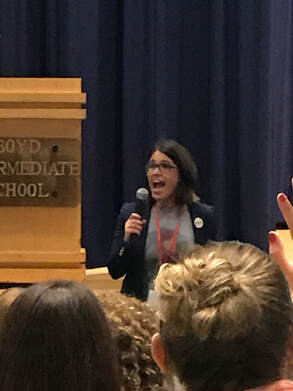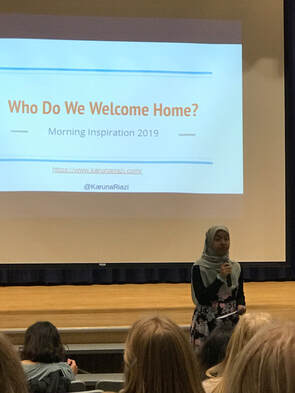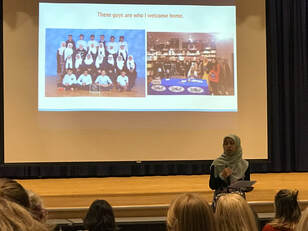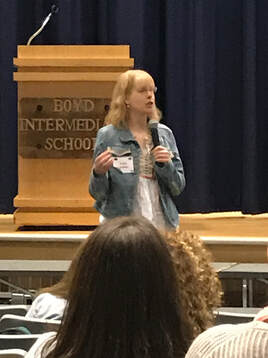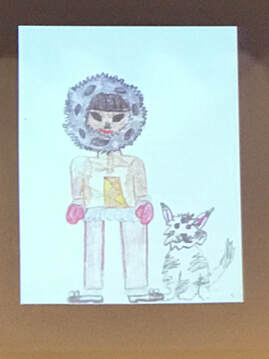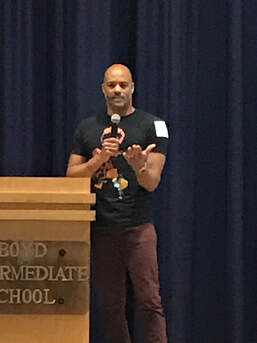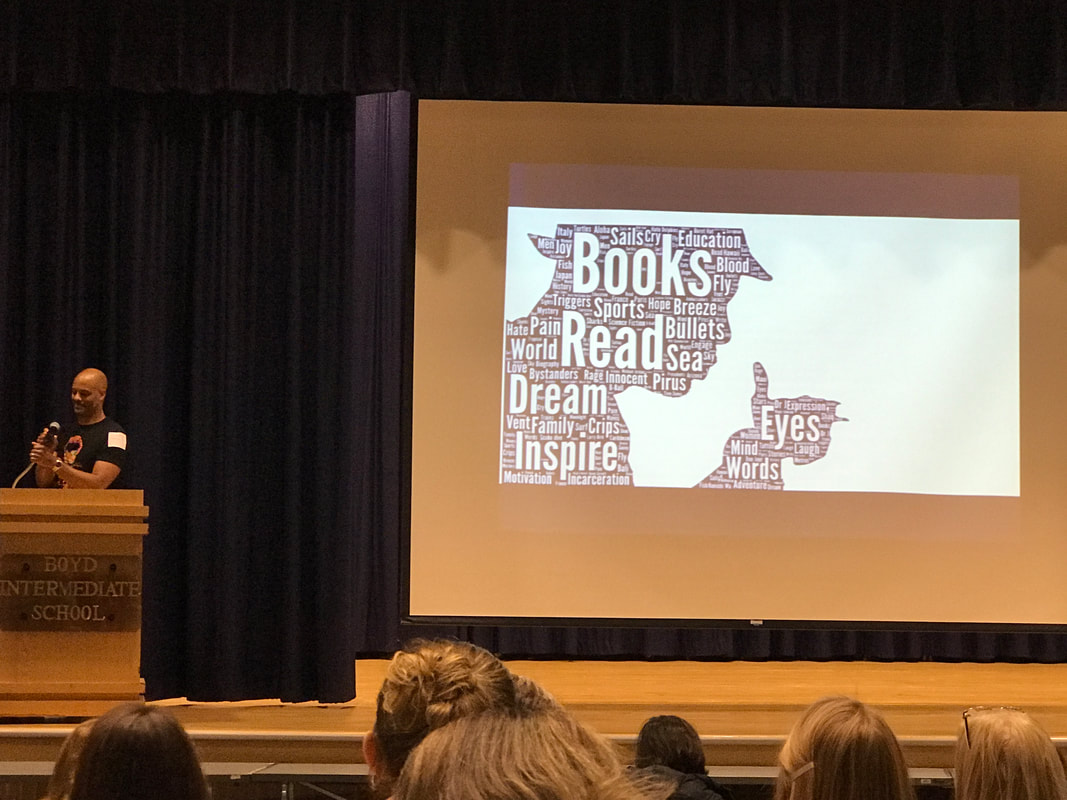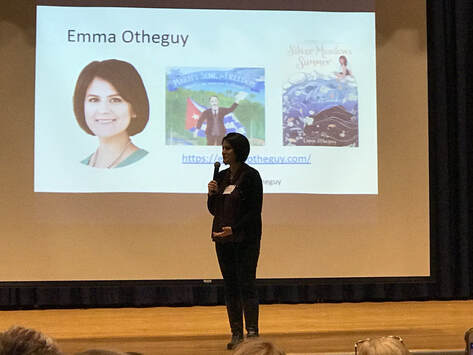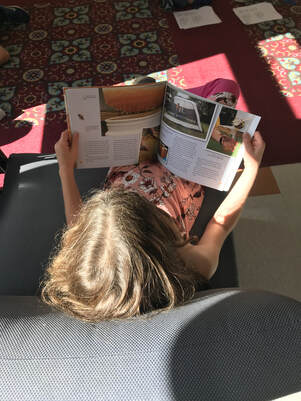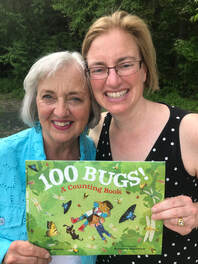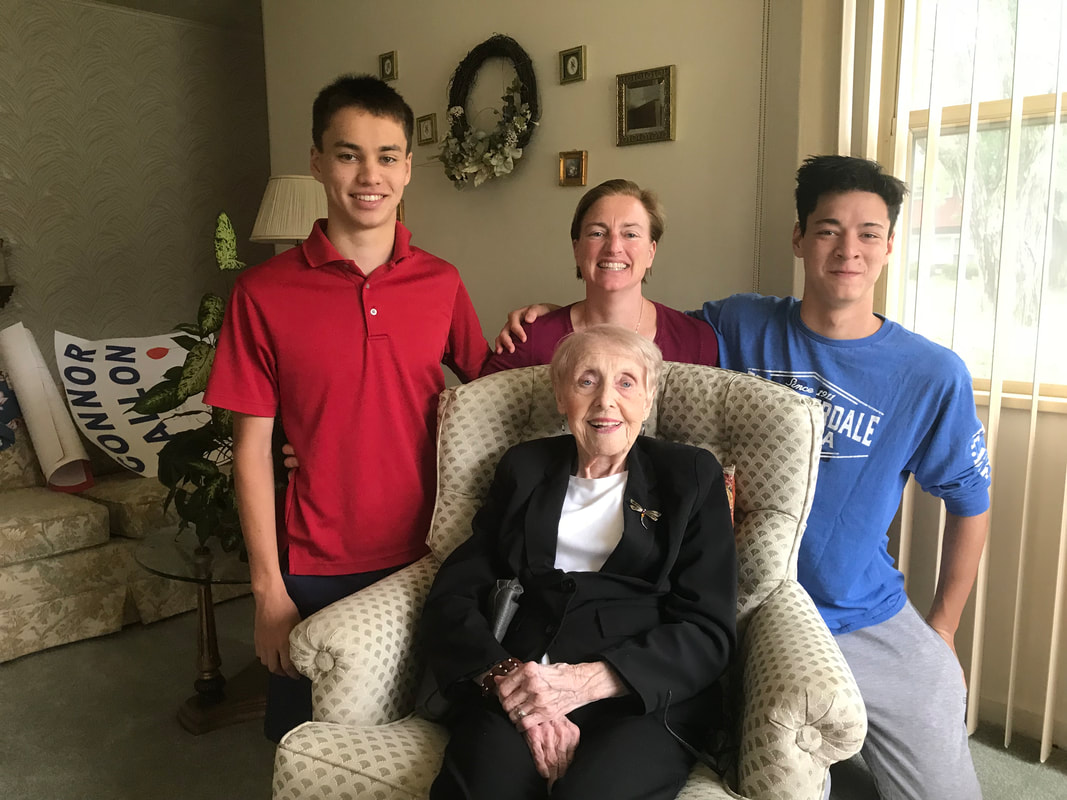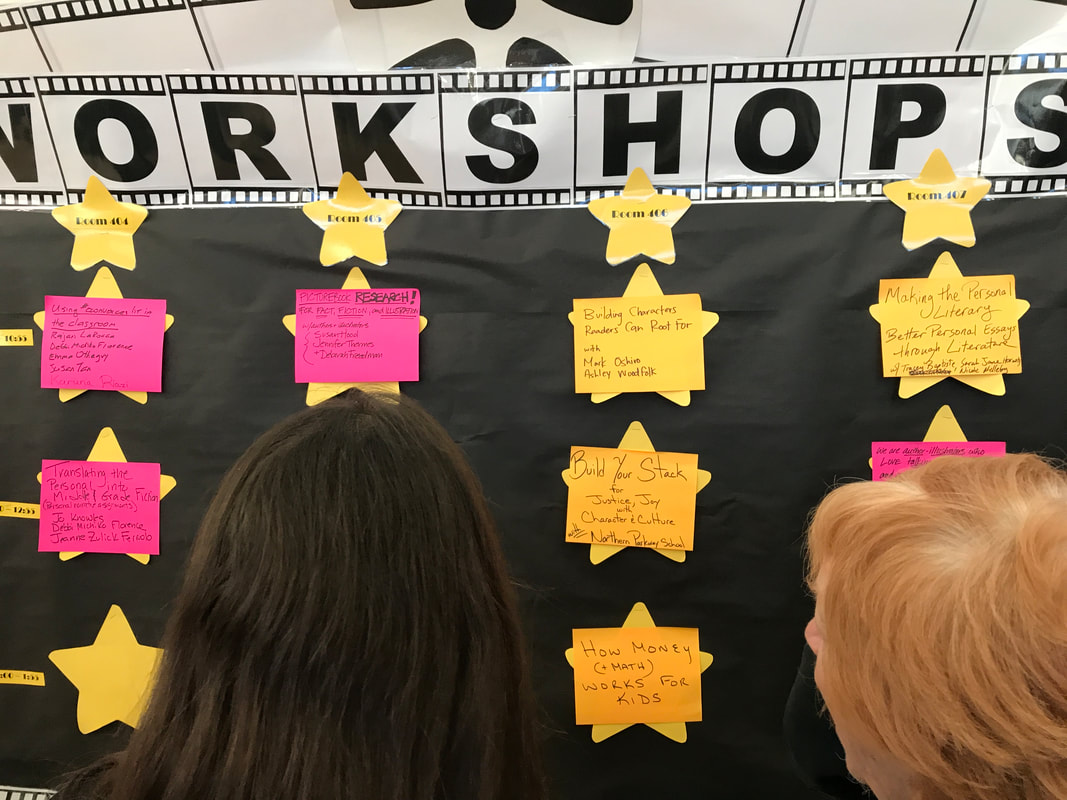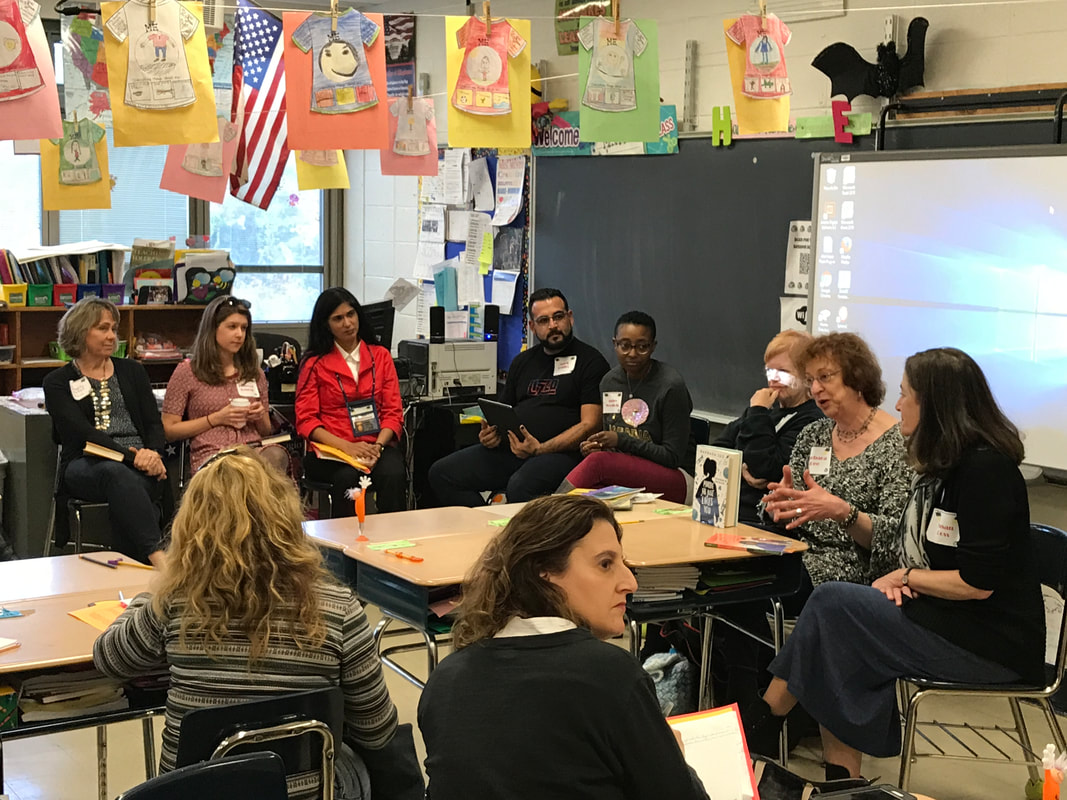|
In my last post, Brutally Honest: Opening Up in the Classroom and on the Page, I talked about tips authors gave for creating characters readers can root for at nErDcampLI. While I thoroughly enjoyed that session, it wasn’t my favorite session of the day. The organizers of nErDcampLI had the fantastic idea to start the day with four nErDtalks. JoEllen McCarthy and Kristen Picone explained that they decided to begin with these inspirational speeches after attending a different nErDcamp. By now you probably have guessed that the nErDtalks were my favorite part of the day. Author and middle school educator Karuna Riazi started us off with her talk, “Who Do We Welcome Home?” She talked about how she is probably the only person in her generation who has never read Harry Potter even though she knows she’s a Hufflepuff. Even though Harry Potter is a fantastic series, she discussed the fact that many people from diverse backgrounds had to make their own home in Harry Potter because they couldn’t find themselves depicted on J.K. Rowling’s pages. Ms. Riazi asked the room full of educators and authors who we are making a home for in our books and in our classrooms. As authors, who are we including in our pages? As educators, do we have literature that represents students from various racial, religious, socioeconomic, gender diverse and neurodiverse backgrounds? Are we taking the time to make sure we know how to pronounce students names? Then, she showed a photo of the students she welcomes home every day. After Ms. Riazi, author and illustrator Lita Judge took the stage. She challenged the educators in the room to provide all sorts of windows for students to enter the world of writing. Ms. Judge shared that she entered the world of writing through her artwork. Are we welcoming all learners in our classroom, or are we only creating homes for students who have strong verbal/linguistic skills? Next up was the unforgettable, inimitable Charles Smith Jr. I am embarrassed to say I had no idea who he was before last Saturday, but I’ll always remember him now. His performance of his biographical poem filled the room with electric energy. He pointed out that when he was a child it was hard for him to find people who looked like him in books. Mr. Smith has spent his life creating books that feature African American people so that other African Americans will be able to see themselves portrayed in picture books. Today in my class, we used Brick by Brick to talk about again-and-again moments. Throughout the book, Smith focuses on the hands of the various people who built the original White House. Emma Otheguy closed the session. She focused on what we are welcoming home instead of who we are welcoming home. Ms. Otheguy pointed out that when we fund one-on-one technology for each student, but we don’t have money for books or to staff libraries that we are sending a strong message that technology counts and books and librarians don’t matter. By the way, I blogged about Ms. Otheguy's novel, Silver Meadows Summer, on August 1st, 2019. I find myself thinking about these questions throughout the school day. What could I be doing to make all the various types of learners in my classroom feel more at home? How can I make more space for empathy, compassion and inclusion so that there’s less space for distance, judgement and exclusion?
The answers aren’t being delivered overnight in tidy packages. No, the answers come at various times throughout the day. Sometimes they come at inconvenient times. Change is rarely convenient, but it’s usually necessary.
0 Comments
Kids are brutally honest. They tell it like it is. I rarely worry about what my students are thinking because they tell me straight up. For example, this student told me, “My friend said that you’re really hard to get to know, but that once she got to know you it turned out you were really nice and one of her favorite teachers.” Ouch. Brutal honesty is also one of the reasons I appreciate my critique groups as well. Although I’ve never published a novel, many of my critique partners have read various drafts of different novels. Guess what? They say the same thing as my student did, my characters are hard to get to know. Distant. This is a huge problem, and I talked about it a bit at the end of my last post, Get Angry. As I wrote the last post, I realized that the subject of creating emotional resonant characters needed way more than a paragraph. Now, I’m not going to spend a whole post looking back at my childhood, my mother’s childhood and my grandmother’s childhood talking about why emotional distance is something that the three of us have struggled with; however, I will say that through hard work, letting people in is something that we’ve all improved at throughout our lifetimes. Obviously, letting people in is an area I still need to do a lot of work in according to my students and my writing peers. But the fact that my grandmother, mother and myself have made improvements in this area fills me with hope because it’s proof that learning lasts a lifetime. I believe that through writing instruction in my classroom that I can create more windows for students to see who I am. In my Bumper Sticker Books and More post(9/22/19) as well as in my Get Angry post(10/23/19), I’ve shared some of the ways writing has built a stronger emotional connection within my classroom community. I am hopeful that I will be able to transfer that social emotional learning into my personal writing as well. In class, we’re moving into our fiction unit now, and we’re about to delve into character. Inked Voices is an online writing community. I’m taking a course through Inked Voices, and we’ve discussed one way to try and get closer to your character is to switch point of view from third person to first person. I’ve tried that several times in different manuscripts. By itself, it hasn’t done the trick. When I think about my classroom, I’d be hesitant to introduce that strategy because it’s a pretty advanced concept. But maybe it’s something I could try at the end of the year. The mentor in the Inked Voices group, Sterling editor Rachael Stein, suggested having the main character open up to one specific character in the book. This tip really resonated with me. Maybe if I make it a focus for every interaction my main character has with her older sister to reveal a layer of her personality, I can chip away at that emotional distance. It’s something I’m going to try. Since friends and family have told me I write powerful letters, in my next draft I’m going to try having the older sister be away at camp and have each chapter either begin or end with the main character writing a letter to her sister. We’ll see how it goes… The universe has a way of not giving up when it wants you to pay attention to something. So yesterday when I attended nErDCampLI and I saw one of the sessions offered was Building Characters Readers Can Root For by Mark Oshiro and Ashley Woodfolk, I was in. It turned out there were other great authors on the panel, too, such as Padma Venkatraman, Barbara Dee and Rebecca Behrens. Here are some of the tips the authors on the panel suggested:
CHARACTER ACTIONS
CHARACTER APPEARANCE
DIALOGUE
PLOT QUESTIONS
Number one take away tip: actions matter. Not all of these ideas are new to me, but the fact of the matter is it’s helpful for me to have everything written down in one place. I can close that window in my brain, and move onto the next task. I’m also hoping one or more of these tips will be help writers no matter what they’re age build characters people can root for. Let’s keep the writing list going. Writers, how do you build characters readers can root for? Let’s start a list for letting students in. Teachers, how do you open your heart to your students? |
Chalk + Ink ChatsWant to hang out with teachers who write and writers who teach? Fill this form to join our Archives
October 2023
Categories |
